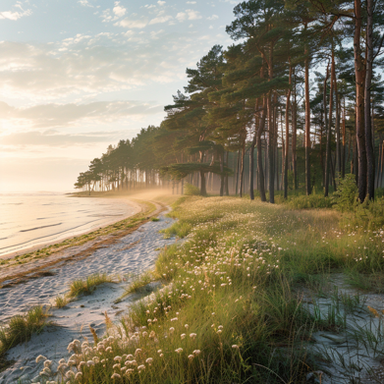HOME | DD
 macrophoto — Tutorial: Microphotography
macrophoto — Tutorial: Microphotography

Published: 2005-05-19 22:04:05 +0000 UTC; Views: 22068; Favourites: 141; Downloads: 6943
Redirect to original
Description
Researched, written, photographed, and compiled by .Please DO NOT use this tutorial to any other websites. However, feel free to link to it. We appreciate your cooperation!
If you notice any spelling, grammar, or other mistakes, send *QuiGonJediJinn a note and let him know he messed up.





Thanks,
Admin Tim
*QuiGonJediJinn
Related content
Comments: 106

It might be worth mentioning that you can calculate the magnification by dividing the focal length of the first by the focal length of the second.
So here we would have
125 : 50 = 2,5
^^
👍: 0 ⏩: 0

Great tutorial! I have been looking into this technique for a while but never fully understood it and was worried about damaging my lenses. Thanks for explaining it so clearly!
👍: 0 ⏩: 0

does this method work with the nikon cameras? I fear it doesn't but it's so nice...
👍: 0 ⏩: 1

I think I should work as long as you use two lenses. The one lens reversed method I saw didn't work on my D40.
👍: 0 ⏩: 1

me too...
thank you so much! 
👍: 0 ⏩: 0

I can never get it to focus when I even just use one lens with something close-up. I think I may need more practice. Thanks for the tutorial!
👍: 0 ⏩: 0

I've got a quick question. Is it possible to change the aperature (to F3.5 or away from it), or are you stuck without any aperature control? I've got a D80 and the stock 18-135. I've also got a reverse lens ring that lets me attach the lens to the camera backwards.
But, the aperature shows up as "F -.-". There's no way to change this, right?
👍: 0 ⏩: 1

Hmmm... I'm not the best person to ask. I usually just fiddle with the settings until it looks right. 
👍: 0 ⏩: 0

Residue is spelt RESIDUE, not RESEDUE.
Second paragraph of article 1. Required Equipment.
👍: 0 ⏩: 1

Thanks for the catch. But I don't know if I even have the original anymore.
👍: 0 ⏩: 0

zOMG I just tried, and it, I don't have the best camera, a 6mp Cybershot. but god damn it worked WONDERFULLY!!
👍: 0 ⏩: 0

Wow! I've never heard of this before! I can't wate to try it out!! 


👍: 0 ⏩: 0




👍: 0 ⏩: 1

No problem! Glad you found it useful.
👍: 0 ⏩: 0

AAAW.... I thought I was the first to think of this... guess I was thinking too highly of myself.... I started doing this back in uh... February...
Note: something that can help focus.... if you are taking pictures of things that stay still... make the aperture MUCH smaller than you normally would... or even as small as it can possibly go... this causes a dificulty with lighting... but... even with your very bright light... make the exposure time as high as it needs to be to for the light metering even if its 30 seconds long or longer.... the result is... even if things are not in focus in the viewfinder... they will come out in focus in the picture. some of the pictures I have taken were impossible to get in focus through the viewfinder... but with a small enough aperture and a long enough exposure, things always work out. A tripod or something stable to stand on is a MUST. I have used CD jewl cases and printing/notebook paper to rais and lower the camera and/or subjects.... and rather than pointing the camera down and using height for focus... I used lateral distance. like this
MapKey:
camera with modifying second lens " II= " tiny spider in home/vial " m " books/CD cases/paper " E "
II= m
EEEE EEE
Product: [link]
👍: 0 ⏩: 0

AAAW.... I thought I was the first to think of this... guess I was thinking too highly of myself.... I started doing this back in uh... February...
Note: something that can help focus.... if you are taking pictures of things that stay still... make the aperture MUCH smaller than you normally would... or even as small as it can possibly go... this causes a dificulty with lighting... but... even with your very bright light... make the exposure time as high as it needs to be to for the light metering even if its 30 seconds long or longer.... the result is... even if things are not in focus in the viewfinder... they will come out in focus in the picture. some of the pictures I have taken were impossible to get in focus through the viewfinder... but with a small enough aperture and a long enough exposure, things always work out. A tripod or something stable to stand on is a MUST. I have used CD jewl cases and printing/notebook paper to rais and lower the camera and/or subjects.... and rather than pointing the camera down and using height for focus... I used lateral distance. like this
MapKey:
camera with modifying second lens " II= " tiny spider in home/vial " m " books/CD cases/paper " E "
II= m
EEEE EEE
👍: 0 ⏩: 0

It works well on compact cams too.
In fact, first time I heard of this was by people using compact (Powershot A serie of Canon).
👍: 0 ⏩: 0

great tutorial
i use something similar: i hold the front end of a 135 mm lens on the front end of my fujifilm s5600.
max zoom, macro mod and that is it.
only problem is the narrow DOF
👍: 0 ⏩: 0

With my Canon EF 70-200mm f/2.8L and my Canon EF-S 18-55 f/3.5-5.6 it would not be possible to do this correct?
👍: 0 ⏩: 1

i have no clue. i don't know what all those numbers mean. 
-Admin Tim
👍: 0 ⏩: 1

Hi Admin Tim
The numbers are just what kinds of lenses (s)he has. They just want to know if the technique would work with those two types of lenses. They're both from Canon. The first one is a [70-200mm Telephoto lens] and the second one is a [18-55mm Super Wide Angle lens].
Hope that helps some.
Much Aloha,

👍: 0 ⏩: 0

Thanks so much for this clear tutorial!!! Very useful!!! 
👍: 0 ⏩: 1

no problem! i hope it helps.
-Admin Tim
👍: 0 ⏩: 0

If you use this technique often and don't want to deal with the tape, a cleaner solution is to obtain a Macro coupler or reverse ring (doubly threaded male ring). Basically it is a filter ring that screws into the filter threads of each lens thereby connecting them together.
Here is an article that describes it and the technique: [link]
Entering "Macro Reversing Ring" in google led me to a site that sells them [link] .
GQ
👍: 0 ⏩: 1

Yes, I was informed about those after I made the tutorial and never got around to updating it. Plus, I'm a starving college student, so I could either buy a reversal ring or eat for a week... hmmm....
-Admin Tim
👍: 0 ⏩: 0

this is one of the best tutorials i have ever seen!!
👍: 0 ⏩: 1

why thank you! i hope you enter the current microphotography contest.
👍: 0 ⏩: 1

im thinking i prolly will.
yeah prolly.
haha
👍: 0 ⏩: 0

I have always wondered how the reverse lens effect works, and this guide is a very nice step by step guide, thanks a lot for this
👍: 0 ⏩: 1

no problem! if you take any pics, let me know. i'd like to see!
👍: 0 ⏩: 1

Will do great tutorial I have done my first one very basic but it is quite nice take a gander in my gallery.
👍: 0 ⏩: 0

thanks so much for this tutorial. It is amazing the stuff I can photograph now since I have a 200mm tele. taking pics like through a microscope is awsome!!! Thanks.
👍: 0 ⏩: 1

i'd like to see some of your attempts! note me when you have some stuff up.
-admin tim
👍: 0 ⏩: 1

And what about vignietting? I am using a bit other method 
👍: 0 ⏩: 1

if the difference between the two lenses isn't great enough, you'll see the vignetting. it's not as much about the aperature as the difference in the lenses.
👍: 0 ⏩: 0

Thanks for the tutorial. It seems to come out as a tiny little vignetted circle for me though.. hmmm...
👍: 0 ⏩: 1

you need to have a larger difference in the lenses. see if you can find a lens that has a greater magnification for the base lens.
👍: 0 ⏩: 1

hmm, I have a 28mm-100mm and a 70mm-300mm lens, what'd be the best combo? or do zooms not really work?
ta for the help.
👍: 0 ⏩: 1

zoom is good. you want the lens with the highest zoom zoomed in all the way and mounted to the camera normally. then take the lens with the least zoom and reverse it and put it on the end of the zoom lens. so basically, you want to have the main lens at 300mm and the reversed one at 28.
👍: 0 ⏩: 1

Ah, right. I'll try that then. thanks a lot.
👍: 0 ⏩: 0

WOWOWOWOWOO!!! cool tut!
just tried it and love it...
i already heard of an retro atapter, so you can mount one objective reverse to the cam-body... but this is simply freakin!
👍: 0 ⏩: 0
| Next =>




































